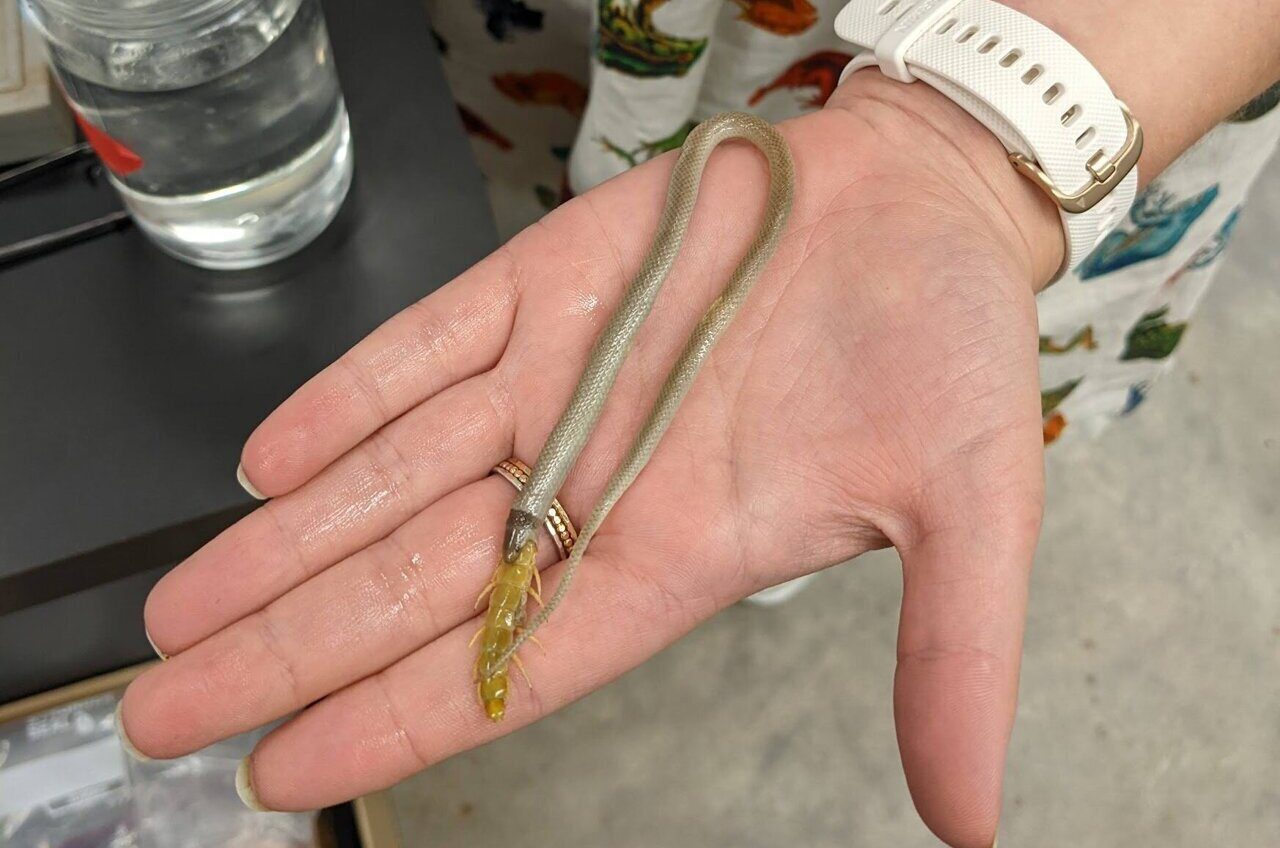North America’s rarest snake, the rim rock crowned snake (Tantilla oolitica), was recently spotted for the first time in four years. Unfortunately, the elusive snake was found lifeless after seemingly choking to death on a giant centipede.
The dueling specimens were found by a hiker in John Pennekamp Coral Reef State Park of Key Largo, Florida Keys. After alerting park rangers to the discovery, the snake and its centipede were handed to scientists at the Florida Museum of Natural History who studied the pair.
“I was amazed when I first saw the photos,” Coleman Sheehy, study co-author from the Florida Museum’s herpetology department, said in a statement.
“It’s extremely rare to find specimens that died while eating prey, and given how rare this species is, I would never have predicted finding something like this. We were all totally flabbergasted.”
What killed this little guy? Image credit: Florida Museum of Natural History
Reporting their findings in the journal Ecology, the team set out to discover exactly how this unlucky snake died.
Using CT scans of the interlocked pair, they created a 3D model (below) to carry out a “digital autopsy” to reveal why this battle proved fatal. This method allowed the researchers to peer inside the snake’s gullet without dissecting the specimen, which could potentially jeopardize future studies.
The analysis revealed that the snake suffered a small wound on its side, most likely inflicted by the centipede’s venomous bite. It’s often assumed that snakes that hunt centipedes may have some resistance to their potent venom, although that’s yet to be proven.
Regardless, the bite appeared to cause some internal bleeding, but that wasn’t the fatal blow. The scans also revealed that the snake’s trachea was pinched tightly by the swallowed prey. This appears to have cut off the snake’s oxygen supply, causing it to suffocate.
Named after the Miami Rim Rock geological formation, this teeny species of non-venomous snake is endemic to southern Florida. It’s considered an endangered species and their numbers are desperately dwindling, which is why this latest find is so exciting, even if the individual has seen better days.
Much of this demise is owed to the development of infrastructure that’s destroying its natural habitat among the pine rockland ecosystems. As a result of ongoing urbanization, just 2 percent of the original pine rocklands remain outside of the Everglades, bringing huge troubles for this already elusive species.
“We can’t say for sure whether or not they’re still present in peninsular Florida. Absence of evidence is not evidence of absence, but their habitat has basically been destroyed,” Sheehy said.
Source Link: North America's Rarest Snake Found Choked To Death On Giant Centipede
